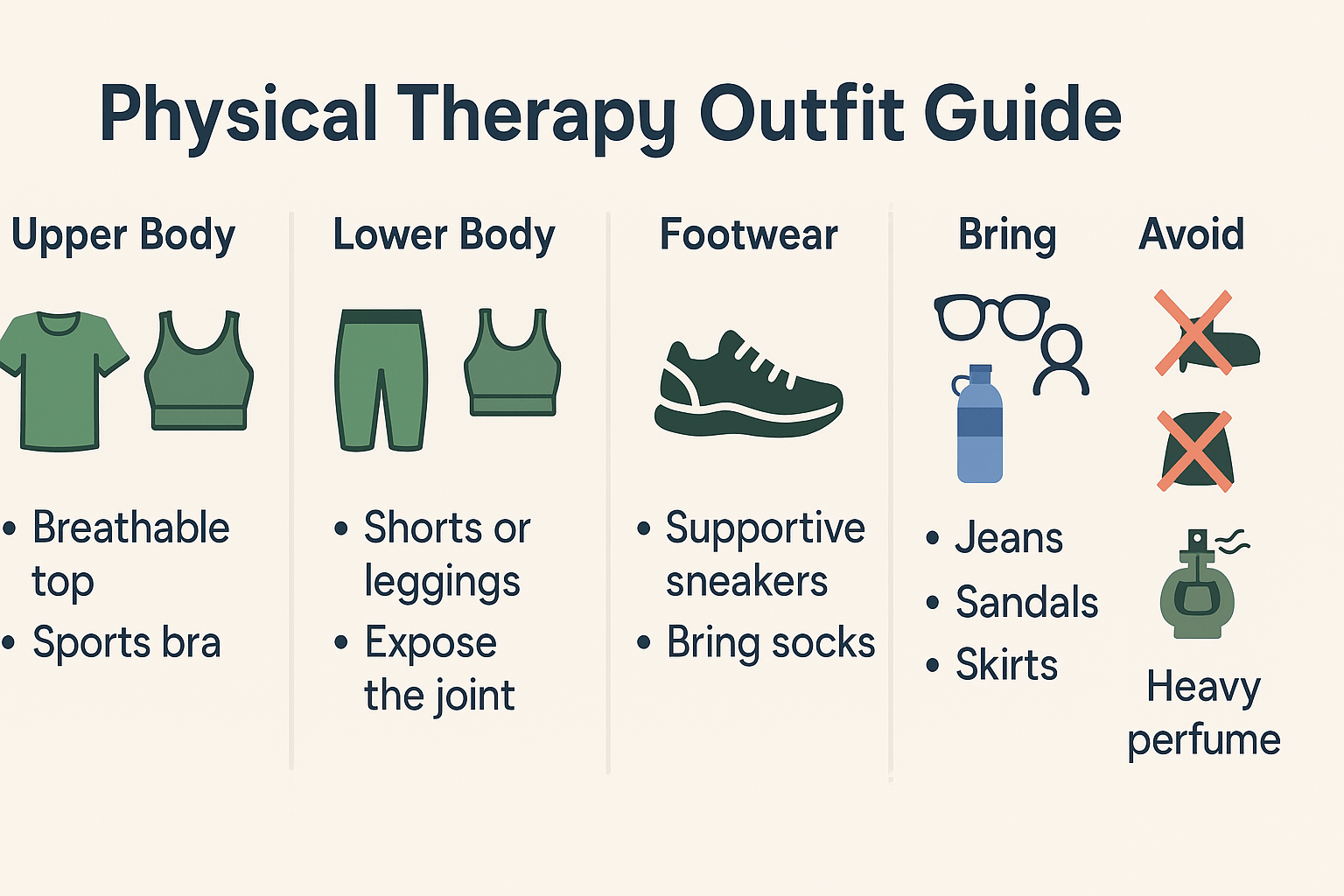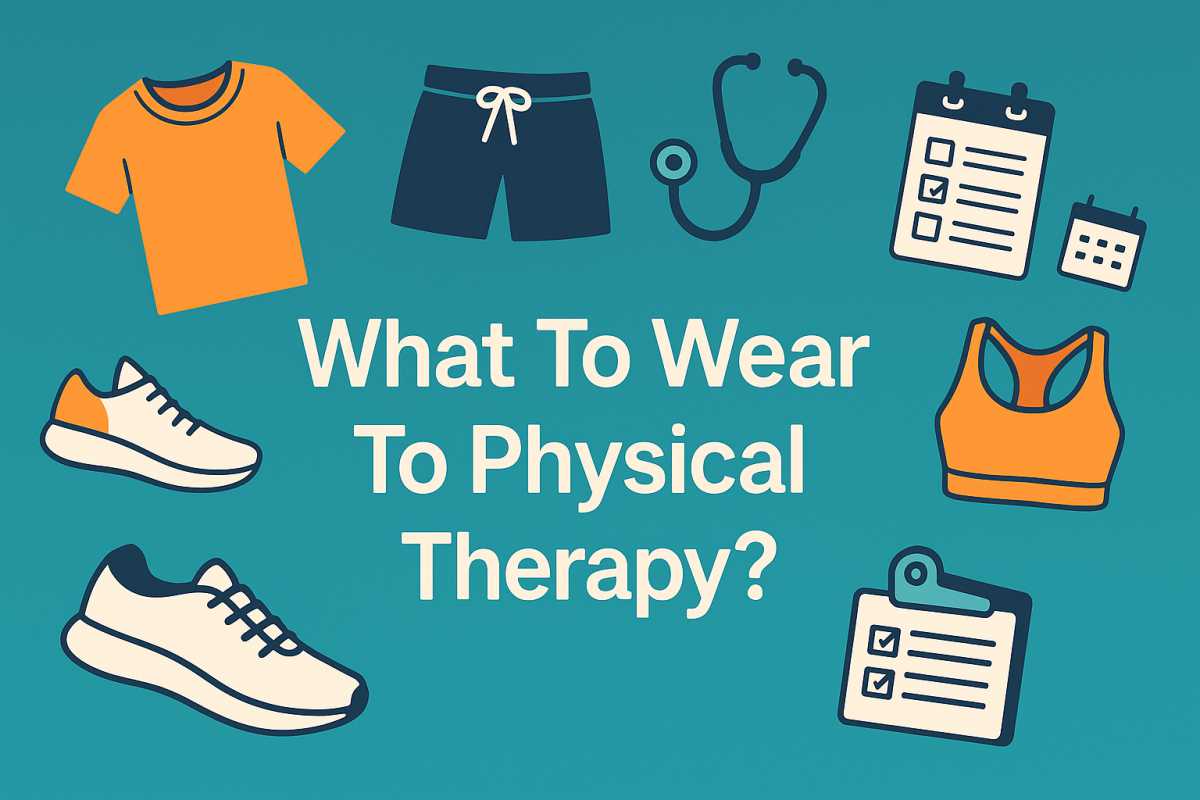If you’re staring at your closet before that first session and thinking, what to wear to physical therapy?—you’re not alone. The right outfit helps you move freely, lets your therapist see and test joints accurately, and keeps you comfortable through stretching, strengthening, and hands-on work. Below is a practical, New-York-tested guide you can use whether your appointment is for a cranky shoulder, post-op knee, or a stubborn low back.
Why Clothing Matters
Your therapist will ask you to reach, squat, lunge, balance, and maybe hop—often more than once. Stiff fabrics or tight waistbands limit range of motion and can skew your evaluation. Clothing also affects what your clinician can see: knees that cave in, a shoulder blade that wings, or swelling after surgery. Choose pieces that stretch, breathe, and allow quick access to the area being treated. If you’ve been googling “what to wear at physical therapy,” the short answer is: athletic layers that move like you do.
Best Tops And Bras
Go for moisture-wicking tees or tanks you’d wear to a workout. For shoulder, neck, or upper-back visits, sleeveless or loose-sleeve tops are best so the therapist can watch shoulder mechanics. Sports bras with a racerback work well; just avoid overly compressive styles that limit breathing or shoulder motion. If you prefer more coverage, bring a light zip-up you can take on and off for portions of the session.
Bottoms And Footwear
Knee, hip, or ankle issues: wear shorts that sit above the knee crease, or leggings that can be easily rolled up. Avoid baggy lounge pants that hide joint lines.
Back pain: stretchy joggers or high-rise leggings are ideal; belts and hard waistbands dig in when lying on the treatment table.
Shoes: sneakers with secure laces, a stable heel, and grippy soles. Slides, sandals, and high heels fight against balance drills and agility work. Bring clean socks for mat work.
If you’re thinking, what should i wear to physical therapy when you’re coming straight from work, pack a quick-change kit: shorts, a breathable top, and sneakers. Many NYC clinics have changing rooms; arriving prepared keeps your visit to that efficient 30–45 minutes.
Accessories, Hygiene, And Comfort
Jewelry & watches: remove anything that could catch on bands or equipment.
Fragrance: keep it light—shared spaces and heavy breathing don’t mix.
Hair: tie it back so your neck and upper back are accessible.
Modesty: bring a thin layer you’re comfortable in; therapists can drape towels for manual techniques.
Hydration: a small water bottle helps, especially after strengthening circuits.

Special Cases
Post-operative care: wear loose garments that clear dressings and braces—think wide-leg pants for knee surgery or button-down shirts after shoulder procedures. Bring any doctor-ordered brace or sling.
Pelvic floor therapy: opt for easy-on bottoms; you’ll often do breath work and core activation. Ask the clinic ahead of time about specific prep.
Running or return-to-sport evaluations: bring your usual training shoes, orthotics, or knee sleeves so the assessment reflects real life.
Cold offices: New York AC can be… ambitious. Pack a light hoodie for between sets.
What You Can Skip
Jeans (they don’t stretch), dress shoes, long skirts that tangle in pedals, and anything you’d be nervous to sweat in. If you’re wondering what to wear for physical therapy on a rainy day, toss in dry socks—simple, game-changing.
Quick Checklist Before You Leave Home
Breathable top + sports bra
Shorts or leggings that expose the treated joint
Secure sneakers and socks
Hair tie, minimal jewelry
Any braces, imaging reports, or post-op instructions
A compact change of clothes if you’re coming from work
Final Word
Still unsure what should you wear to a physical therapy appointment? Think “gym-ready but clinic-appropriate.” If the therapist needs to see a joint move, it should be easy to uncover without fuss. When in doubt, call the front desk—they know exactly what their specialists need for your condition. Dress to move, pack a spare layer, and you’ll be ready to focus on what matters: getting stronger, moving better, and feeling like yourself again.
